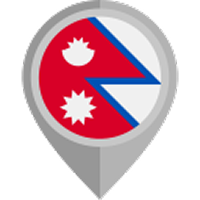Nepal vision | 04/04/2024
So, you want to join us on an exhilarating journey of the mountains in Nepal. But which should you start on? Well, the Pachermo Peak is the one for you.
This adventure tests your limits and rewards your courage with beautiful scenery in between the towering Himalayas.
Likewise, it takes us through remote landscapes, rivers, and Sherpa villages. Finally, reaching the summit rewards climbers with breathtaking views of Mt. Everest and other Himalayan giants.
Pachermo Peak calls those who are looking forward to challenge and discovery. Let us learn all about Pachermo Peak climbing to help you make the journey of your lifetime.
Overview and highlights of Pachermo Peak

Pachermo Peak, also known as Parchemuche Peak, is situated in Nepal's Rolwaling region, near the renowned Tashi Lapcha Pass. This pass connects the Rolwaling and Everest regions, offering trekkers and climbers access to both areas.
The peak offers stunning views of the surrounding Himalayan range, including iconic peaks like Gaurisankhar, Mt. Everest, Nuptse, Amadablam, and Makalu.
At an altitude of approximately 6,187 meters, Pachermo Peak presents a moderate technical challenge. The Nepal Mountaineering Association (NMA) classifies it as a "B" group peak. While not excessively technical, the climb requires knowledge of a mix of straightforward and technical sections.
Challenges include glacier crossings, steep uphills, and minor technical obstacles towards the summit. It provides the Everest panorama view, making it even more exciting.
Highlights of Pachermo Peak Climbing:
- Technical Challenge: Pachermo's rugged terrain offers a thrilling ascent for experienced climbers
- Remote Beauty: Trekking through the Rolwaling Valley reveals untouched landscapes, Sherpa villages, and natural beauty.
- Scenic Treks: On the route to Pachermo, trekkers traverse the Tashi Lapcha Pass, which offers panoramic views of surrounding peaks and valleys.
- Cultural Immersion: Encounter the rich Sherpa culture and diverse flora and fauna as you journey through this remote region.
- Summit Panorama: Reaching Pachermo's summit rewards climbers with awe-inspiring views of iconic Himalayan peaks, including Mt. Everest.

How should I plan for the Pachemro Peak Climbing?
Planning for a Pachermo Peak climbing expedition involves several key aspects. It includes weather considerations, permits, training, and necessary accessories. Let us dive into the detailed aspect and plan effectively.
Best weather to climb Pachemro Peak
The best time to climb Pachermo Peak is during spring (March to May) and autumn (September to November). In spring, you'll find stable weather with clear skies and mild temperatures. Plus, you'll enjoy beautiful blooming rhododendron forests.
Autumn brings dry, stable weather, clear skies, and mild temperatures. You'll also get to see stunning snow-capped peaks and colourful fall foliage. Keep an eye on weather forecasts for safety. Generally, these seasons offer the best climbing conditions for Pachermo Peak.
Training
Make a detailed fitness plan to prepare you for the physical and technical demands of climbing Pachermo Peak.
Focus on cardiovascular endurance, strength training, flexibility, and altitude acclimatisation. Incorporate activities such as hiking, running, cycling, strength training, yoga, and altitude training into your regimen.
Gradually increase the intensity and duration of your workouts to build stamina and endurance for the climb. During training sessions, practice using mountaineering equipment and rope techniques.

Permit Required
There are two permits required for the climbers to make their journey successful. These two permits are:
Climbing Permit
- Pachermo Peak is a "B" group peak, and climbing it requires obtaining a permit from the Nepal Mountaineering Association (NMA).
- The permit fee varies depending on the season:
- Spring (March-May): $250 per person
- Autumn (September-November): $125 per person
- Winter (December-February) and Summer (June-August): $70 per person
- Obtain the Climbing Phapchhermo Peak Permit from the NMA before your expedition.
Sagarmatha National Park Permit
- Sagarmatha National Park Permit is required for trekking and climbing in the region.
- This permit allows you access to the Sagarmatha National Park, where Pachermo Peak is located.
Required Accessories
- Mountaineering Boots
- Climbing Harness
- Helmet
- Ropes
- Ice Axe
- Crampons
- Clothing Layers
- Gloves
- Headlamp
- Tent
- Sleeping Bag
- Sleeping Pad
- Cooking Supplies
- Food and Water
- Navigation Tools
- Personal Items
- Emergency Equipment
- Repair Kit
- Backpack
- Trekking Poles

Tips to make Pachermo Peak Climbing better
- Acclimate Slowly: Adjust to higher altitudes to avoid altitude sickness.
- Stay Hydrated and Fueled: Drink plenty of water and eat energy-rich foods to keep your body strong.
- Take Breaks: Pace yourself and rest when needed to avoid exhaustion.
- Be Safe: Use proper equipment and follow safety guidelines at all times.
- Watch the Weather: Stay informed about the forecast and be prepared for changes.
- Respect Nature: Leave no trace and minimize your impact on the environment.
- Enjoy the Journey: Take in the scenery and savour the experience of reaching the summit.
To wrap up, climbing Pachermo Peak is not just about reaching the summit; it's a journey of self-discovery and appreciation for the natural world. From the challenges of the ascent to the breathtaking views from the top, there are opportunities for growth and reflection. Climbers walk through rugged terrain, overcome obstacles, and push their limits.
They bond with fellow climbers, embrace the beauty of the mountains, and discover their strength. With the support and expertise of Nepal Vision Trek, climbers can start on a memorable adventure.
FAQ









